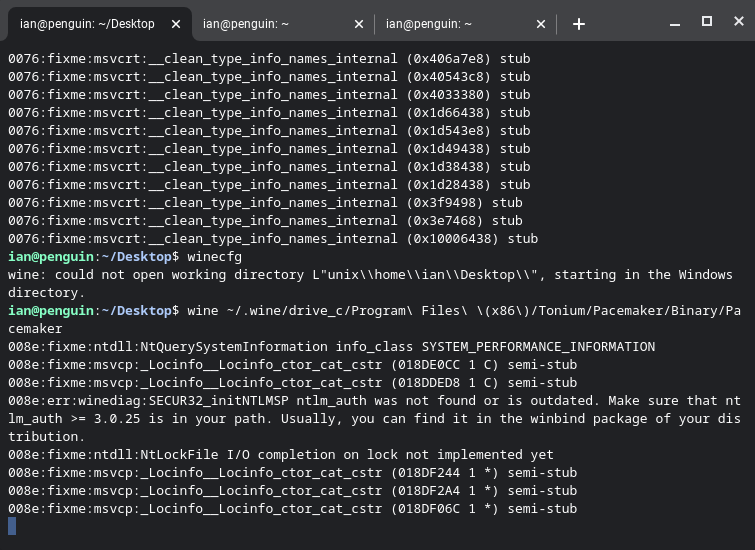
I won’t lie, I was up till 2am getting the pacemaker editor to work with my Chomebook. But honestly it wasn’t so bad, most of the time was unzipping and moving things around in ChromeOS.
It all kicked into gear when I saw you could install Wine5 on Linux on ChromeOS. I gave it a try on my chromebook, as I could never quite get it working correctly on my Dell XPS13 (likely the something to do with the Pacemaker app being 32bit or something?). However it worked on ChromeOS and my only issue is the Pacemaker app makes everything super tiny even when changing the DPI settings in Wine. Luckily I have very sharp eyes and can actually see it ok without changing the native resolution of the chomebook.
Its a bit of testament to my knowledge of Linux, one thing lead to another thing, including copying the settings from my other wine running machine, changing config files, mounting the SD card full of mp3s in Linux and pick up my Pacemaker maker device in wine.
For reference I have my music collection on a external microSD and the chromebook has one USB A port, meaning I can plug my Pacemaker in without a USB C to A converter. Wine 5 is installed under the ChromeOS – Linux beta. I launch the Pacemaker editor (windows app) from the command line using
wine ~/.wine/drive_c/Program\ Files\ \(x86\)/Tonium/Pacemaker/Binary/Pacemaker
Although I have made a pacemaker.sh for it now. Of course this doesn’t show in ChromeOS’s own launcher but thats not too much of a problem. Its not like I will need it every day.
Now its all working, it means when we can finally go away more easily than right now (written during the Covid19 pandemic). I can record mixes and put them out before going home to transfer them. Which was always a bit of a pain to tell the truth.
Next steps is to see what happens when I use the other pacemaker device which has the upgraded firmware.



